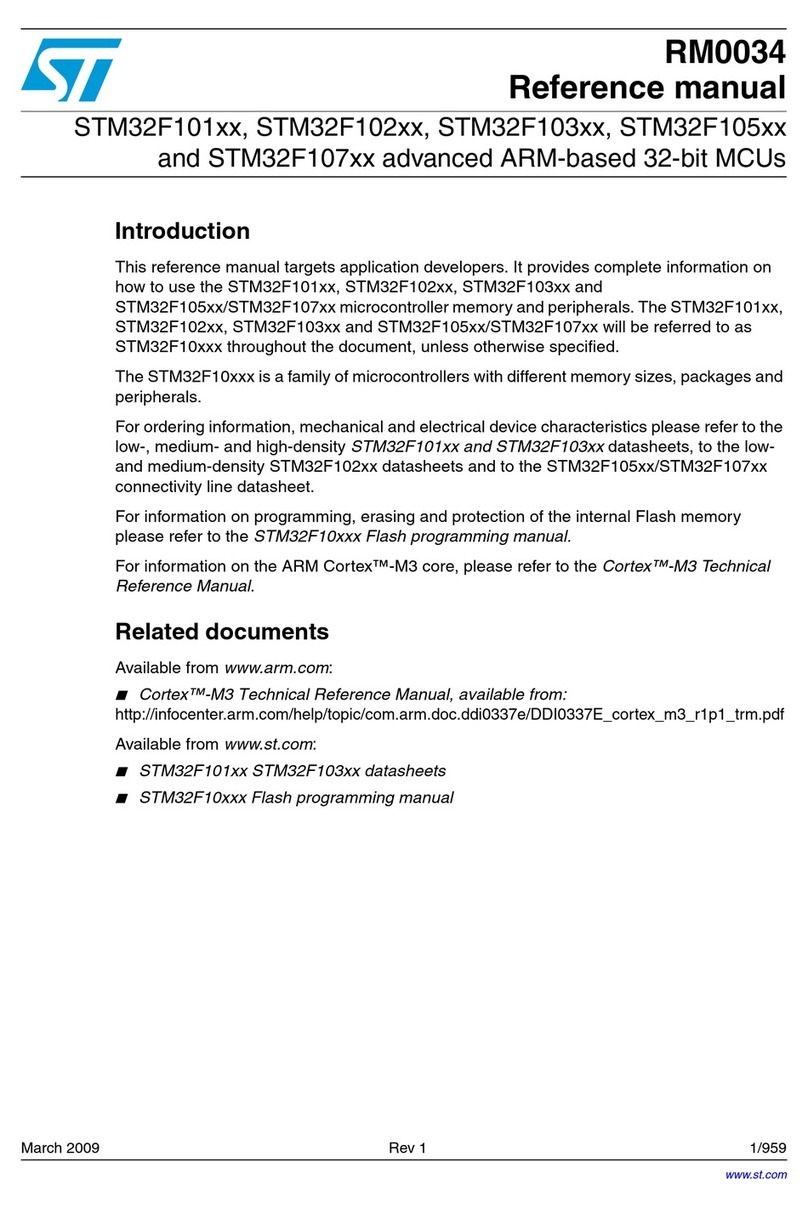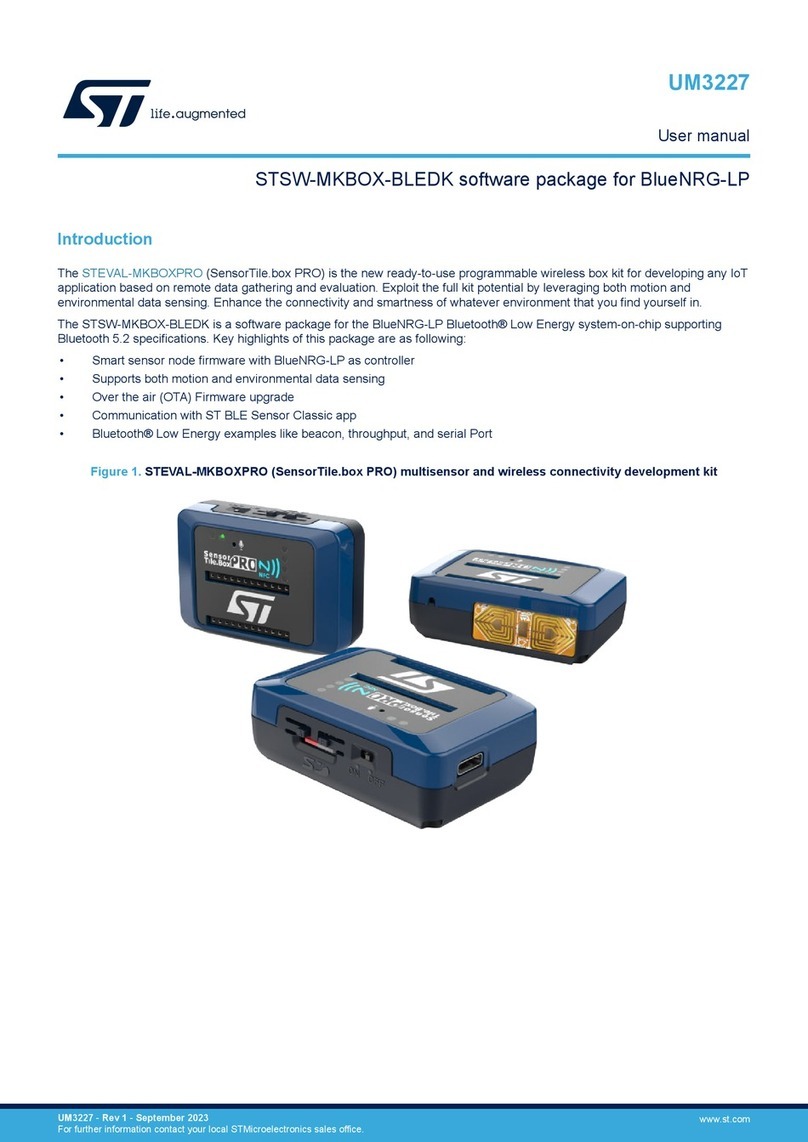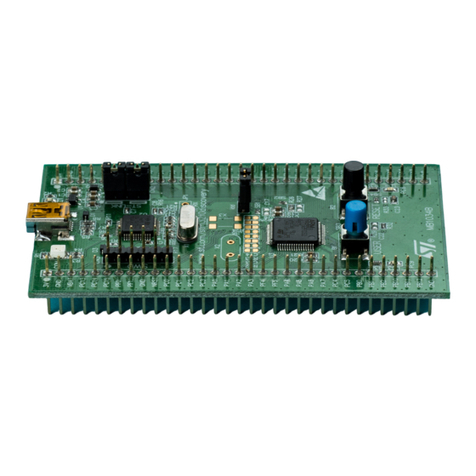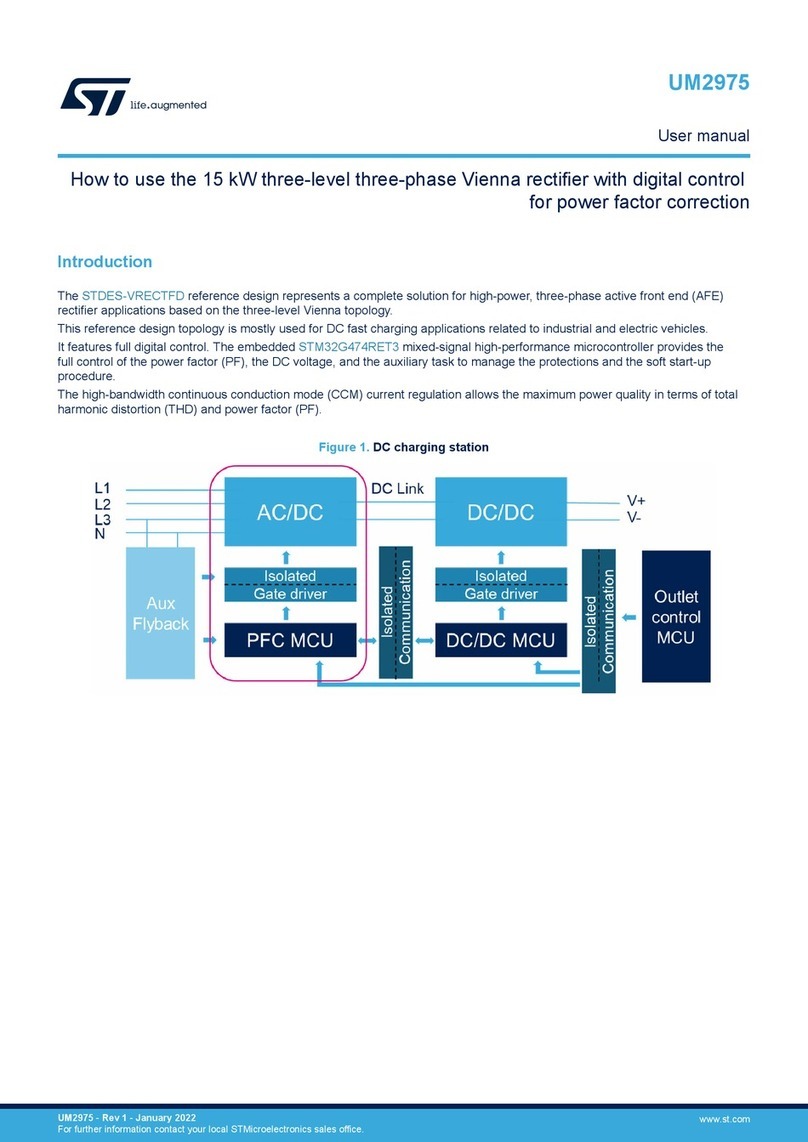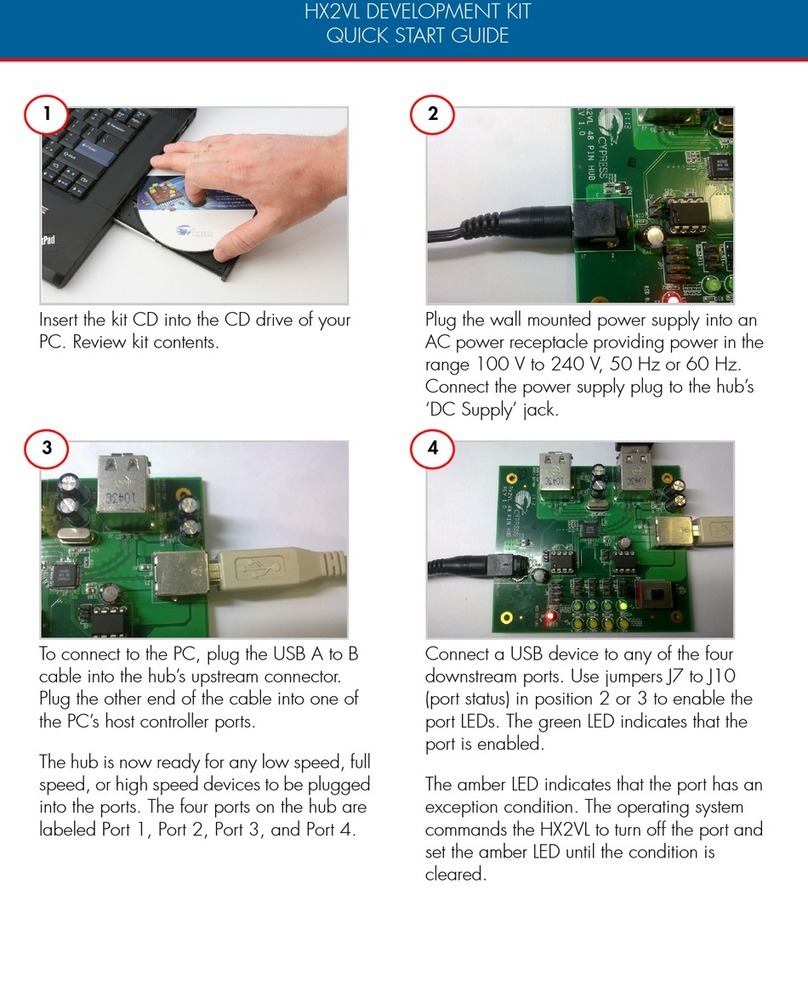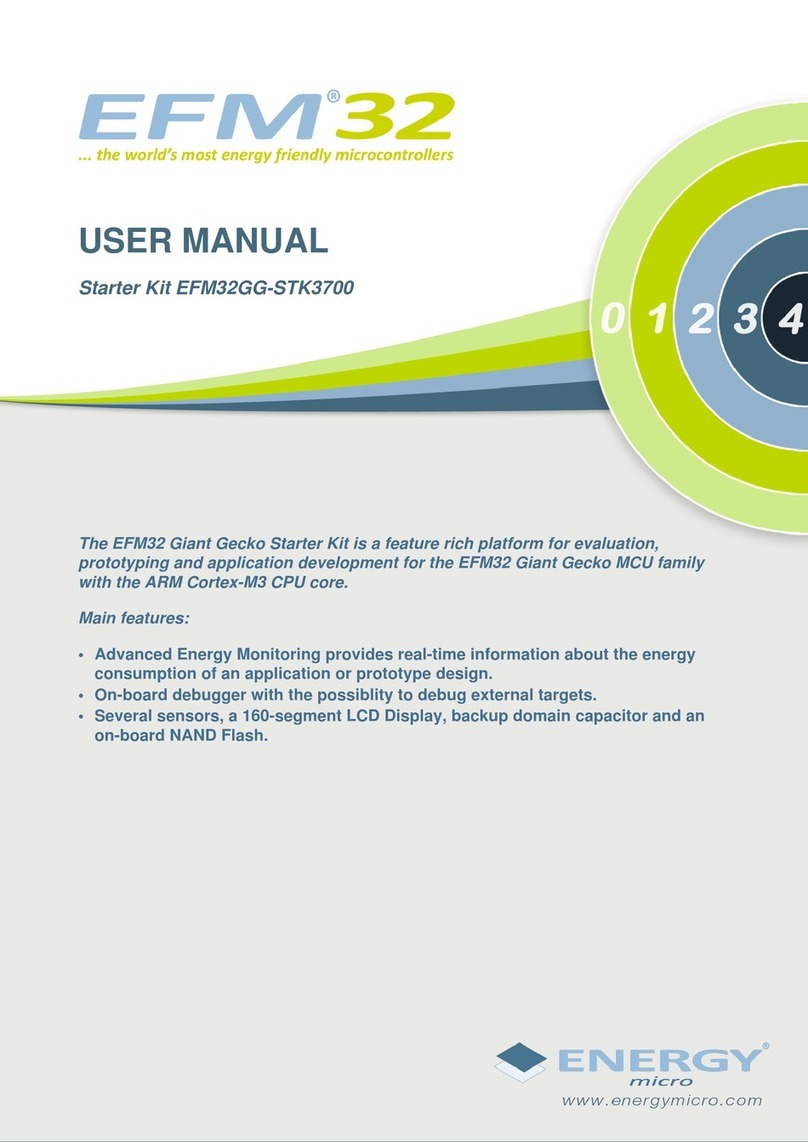ST SPC582B Series Installation and operating instructions
Other ST Microcontroller manuals
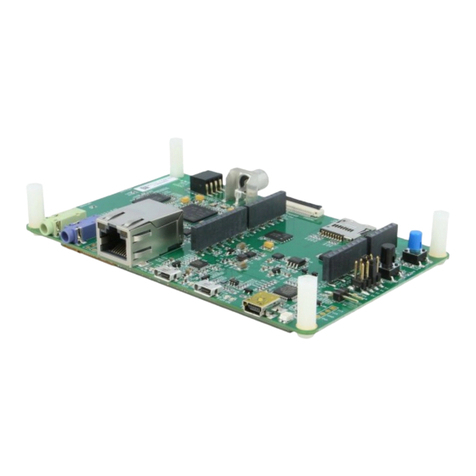
ST
ST STM32F7508-DK Manual
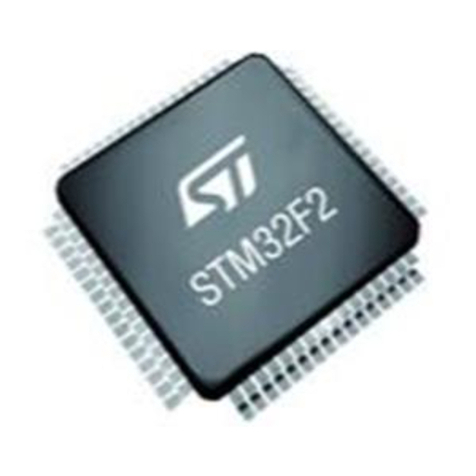
ST
ST STM32F2 Series User manual
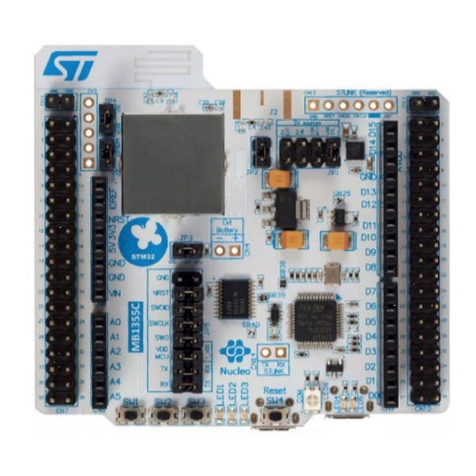
ST
ST ST25DV-I2C User manual
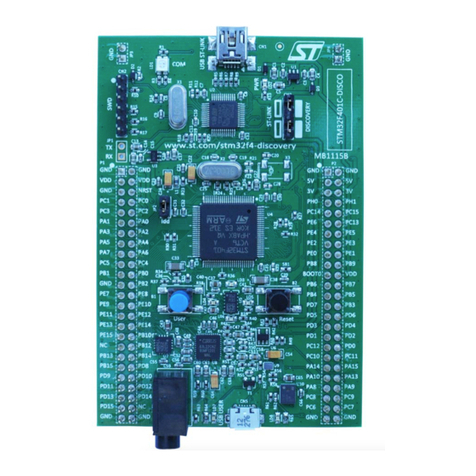
ST
ST STM32F401 Discovery User manual
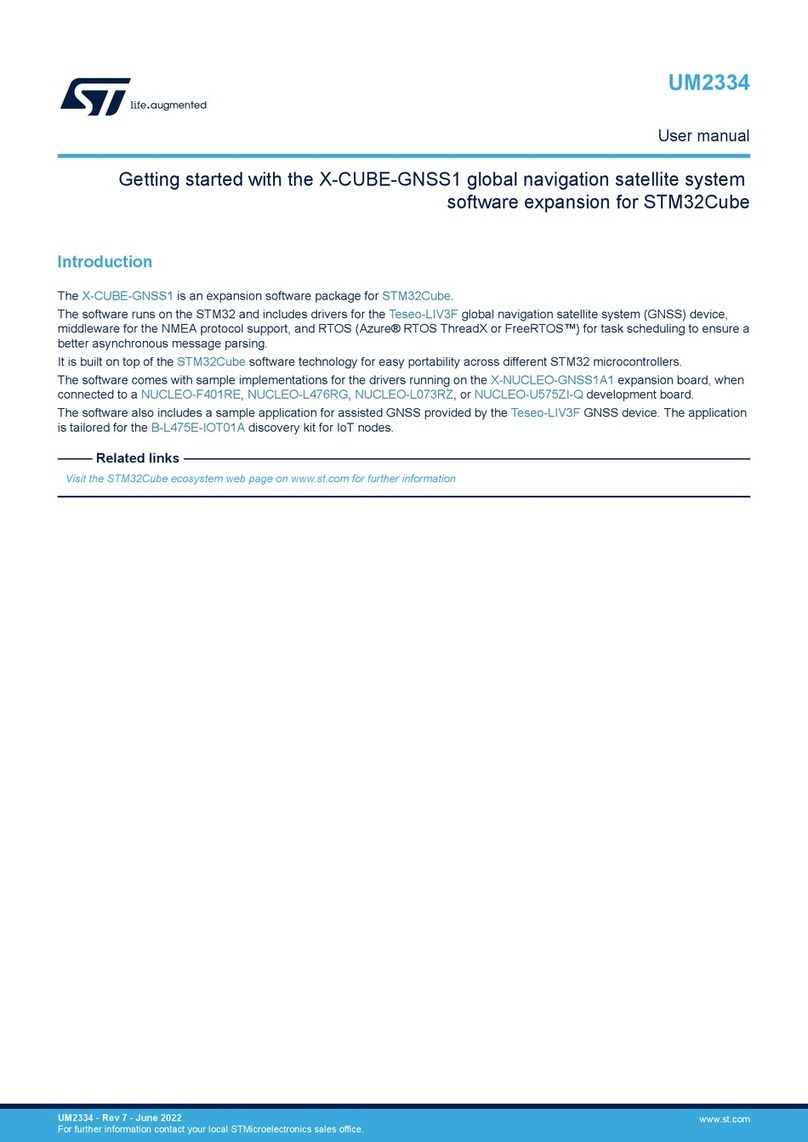
ST
ST UM2334 User manual
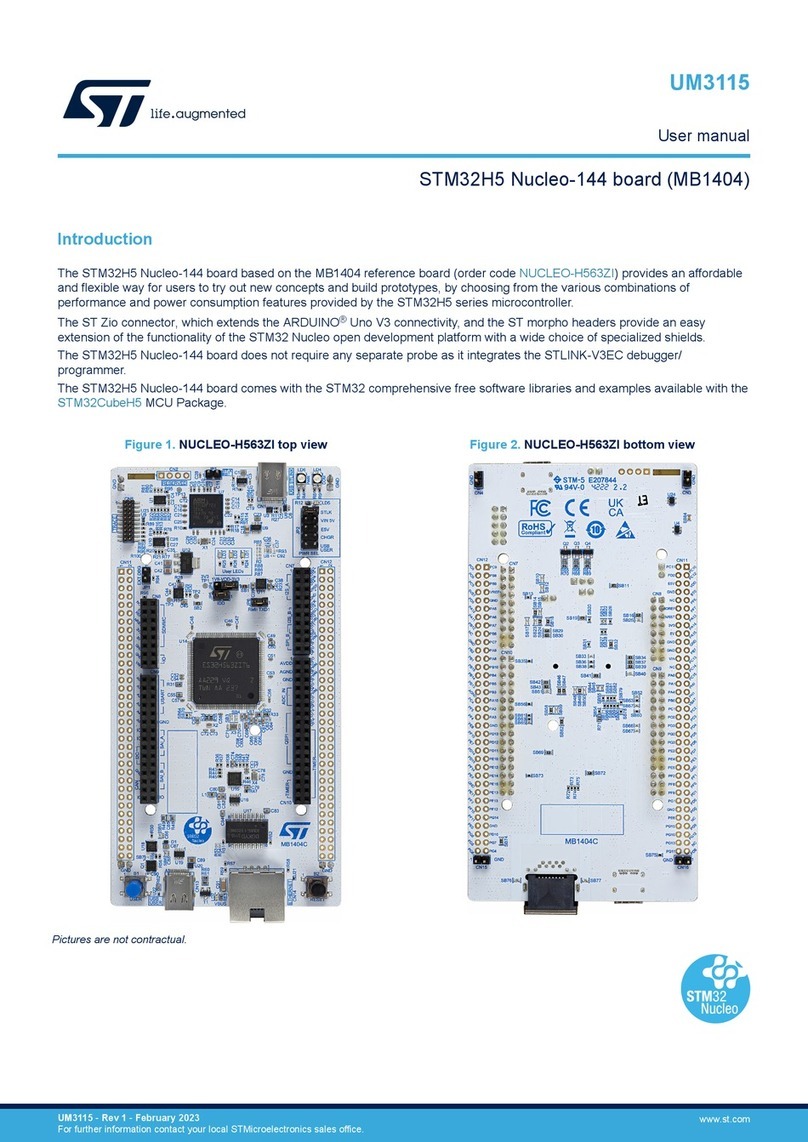
ST
ST STM32H5 Nucleo-144 User manual

ST
ST SPIRIT1 User manual
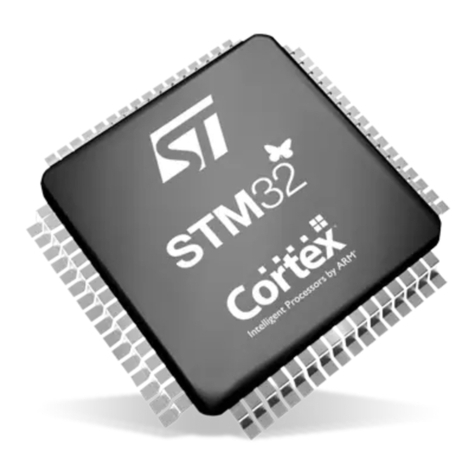
ST
ST STM32 Nucleo Installation and operating instructions
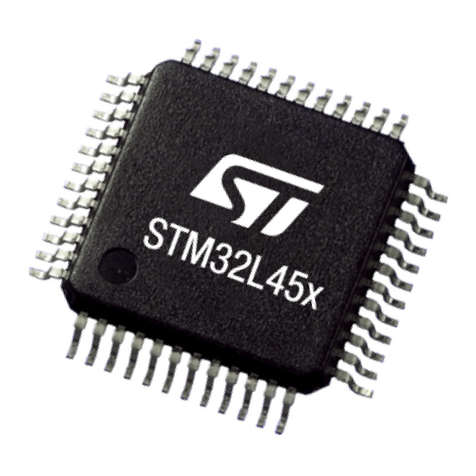
ST
ST STM32L4 Series User manual
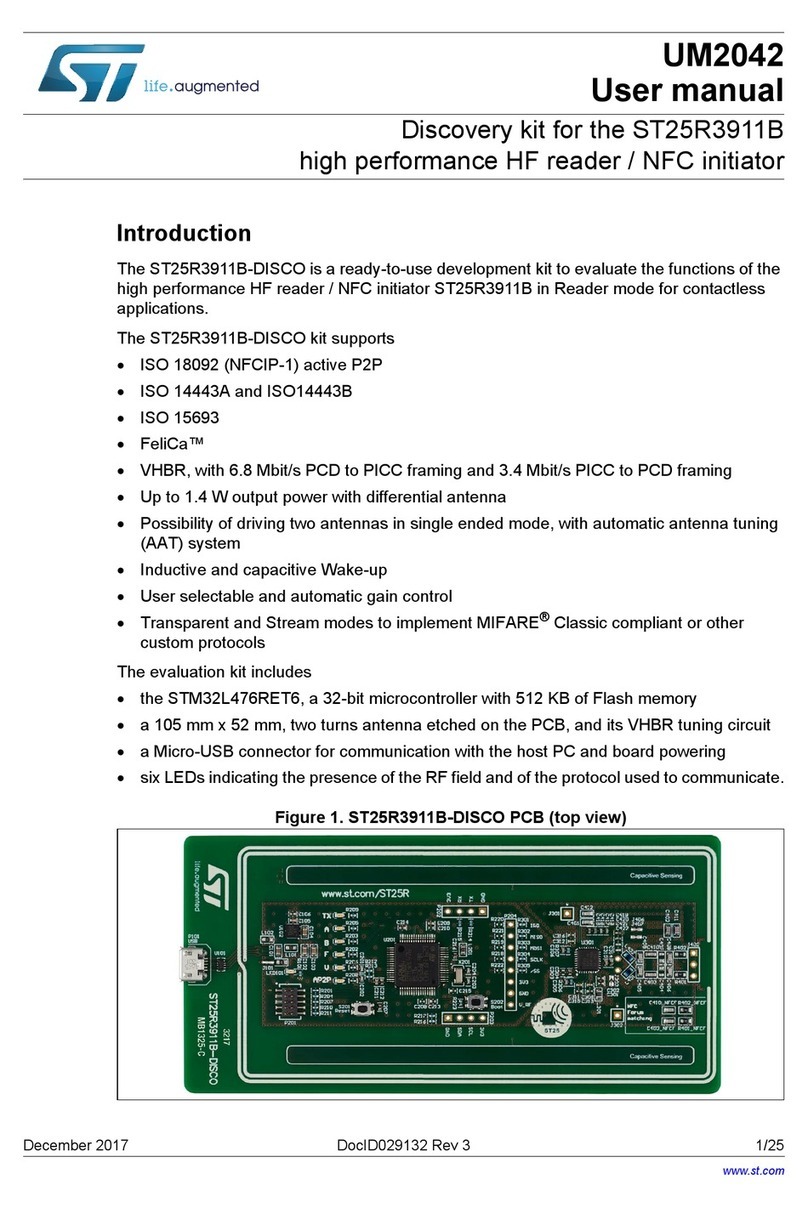
ST
ST ST25R3911B User manual
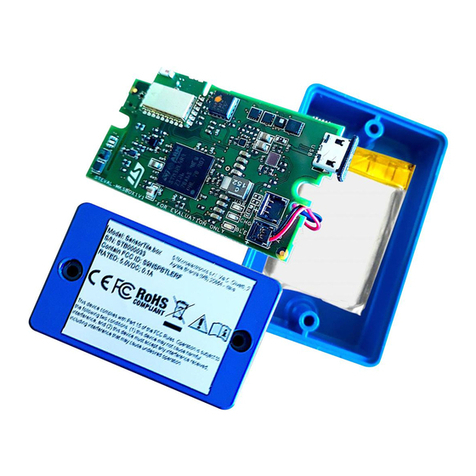
ST
ST STEVAL-MKSBOX1V1 User manual
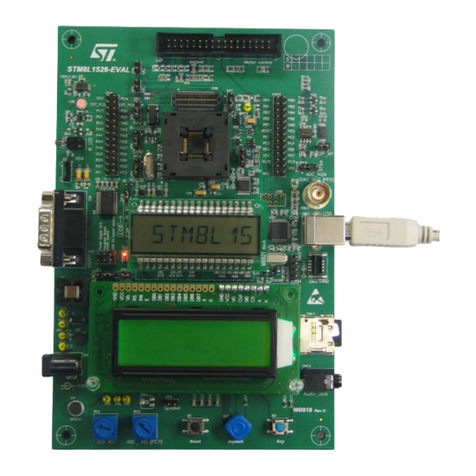
ST
ST STM8L Installation and operating instructions
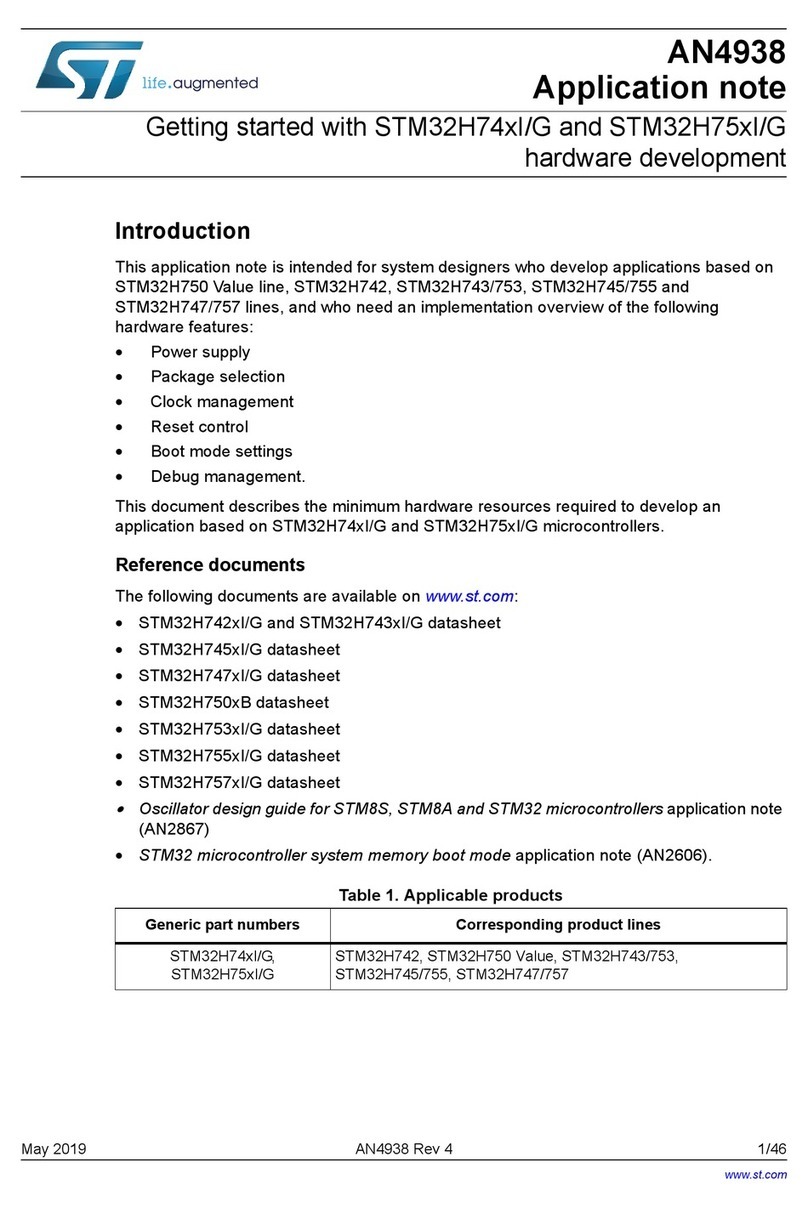
ST
ST STM32H74xI/G User manual

ST
ST STM32F0 Series Owner's manual

ST
ST ST624 B-EMU2 Series User manual
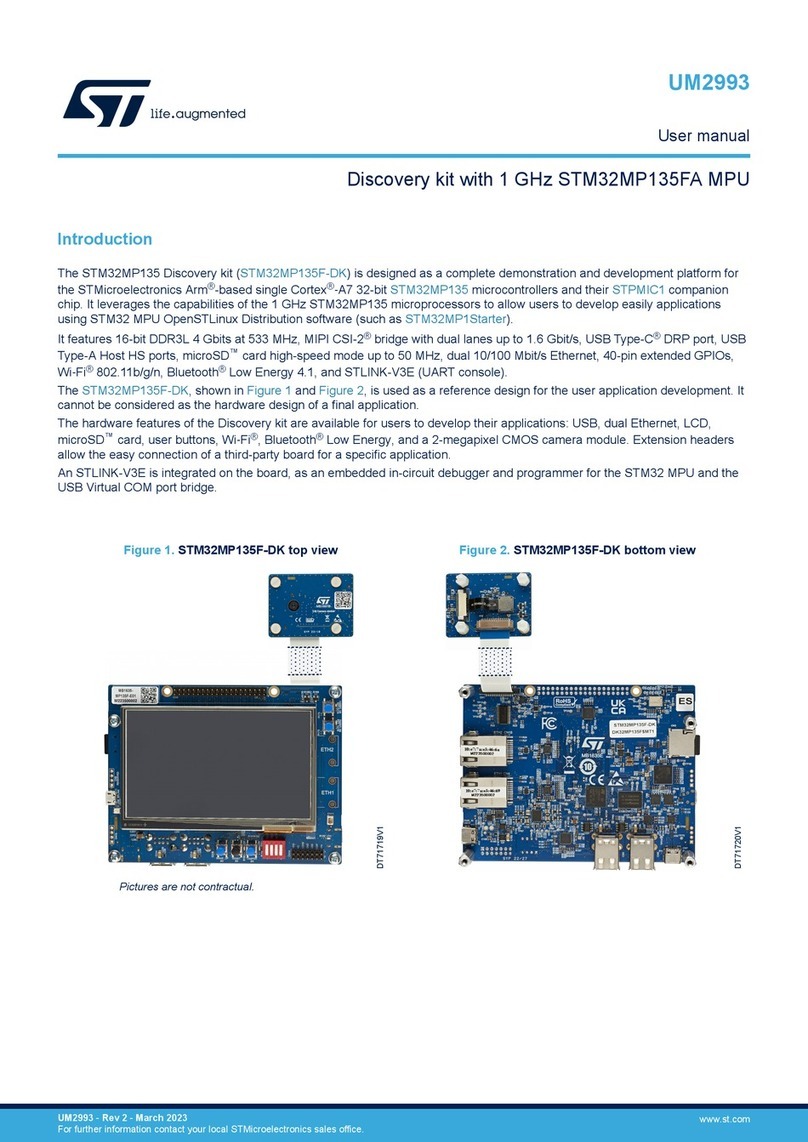
ST
ST STM32MP135F-DK User manual
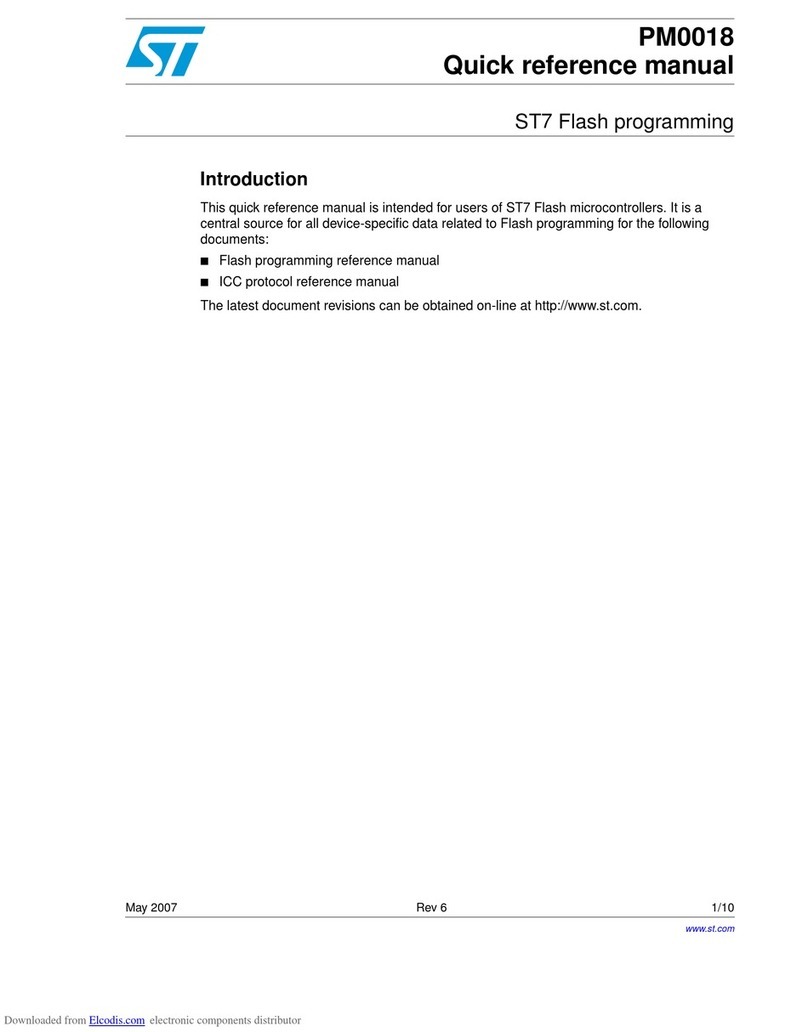
ST
ST Flash ST7 Service manual
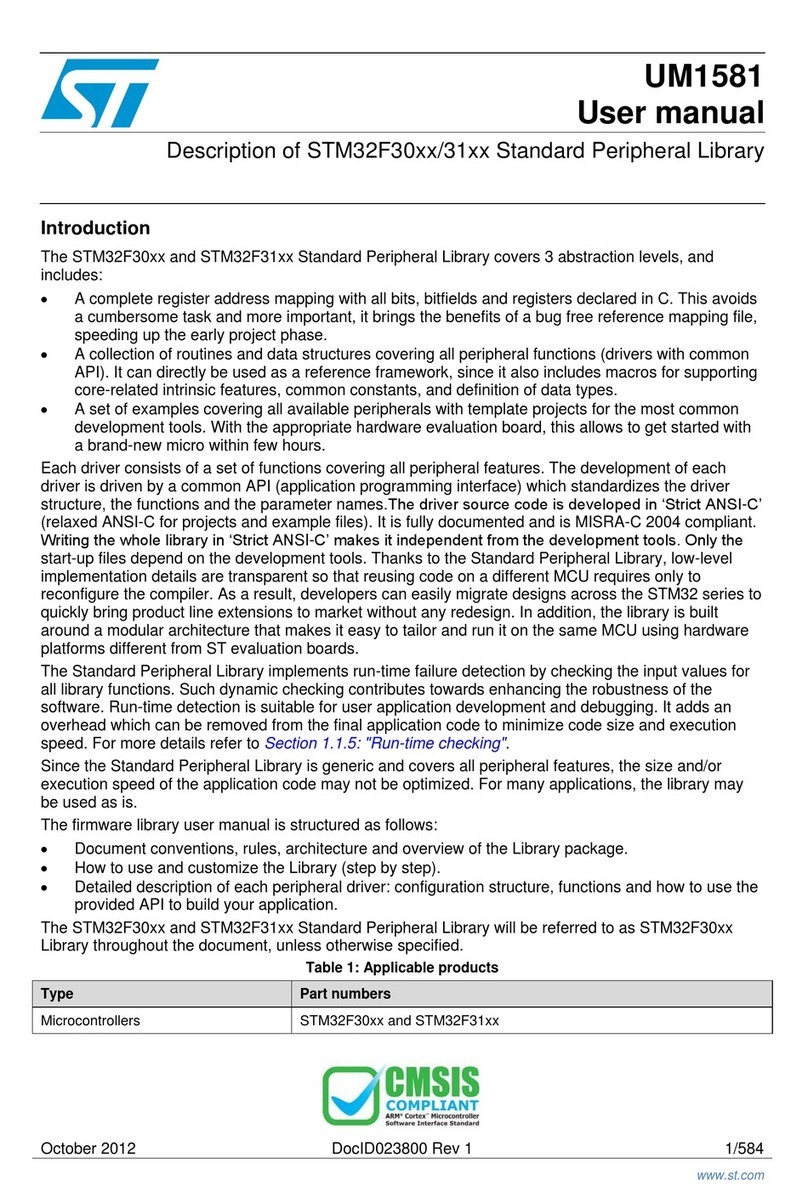
ST
ST STM32F31xx User manual

ST
ST STM32 Nucleo Installation and operating instructions
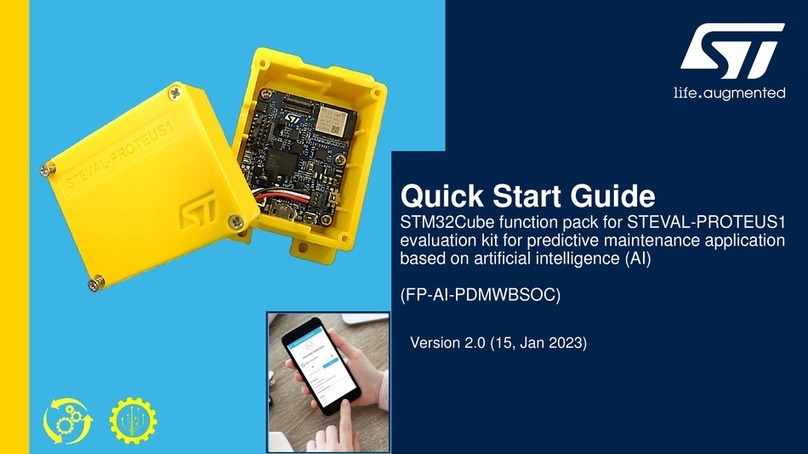
ST
ST STM32Cube User manual
Popular Microcontroller manuals by other brands

Novatek
Novatek NT6861 manual
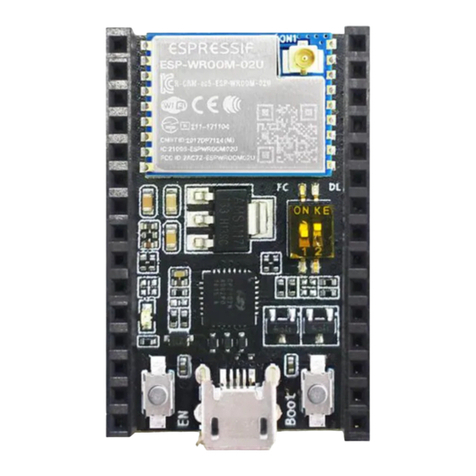
Espressif Systems
Espressif Systems ESP8266 SDK AT Instruction Set

Nuvoton
Nuvoton ISD61S00 ChipCorder Design guide

STMicrolectronics
STMicrolectronics ST7 Assembler Linker user manual

Texas Instruments
Texas Instruments Chipcon CC2420DK user manual

Lantronix
Lantronix Intrinsyc Open-Q 865XR SOM user guide
